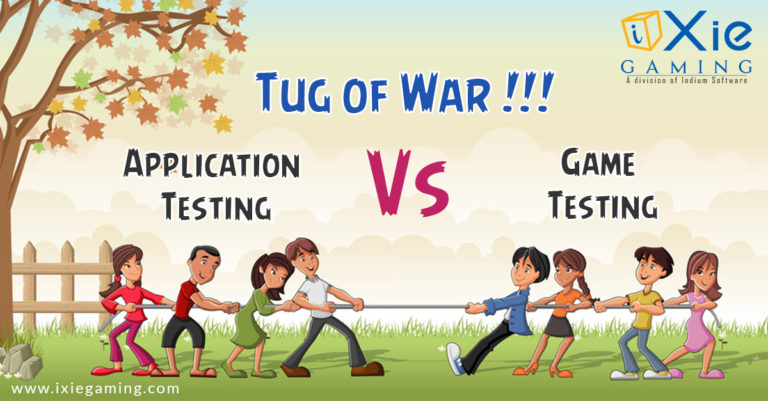Modern mobile games have high-quality animations, sounds, and visuals. Manually testing these games can be time-consuming, delaying the time-to-market. Also, you run the risk of missing specific testing aspects, considering their broad testing requirements. However, releasing a game that has not been thoroughly tested can affect its success and performance, leading to a poor gaming experience. But what’s the solution to all these woes? Mobile game test automation.
Automated game testing services help you test your mobile games rapidly. It enables you to identify defects faster, minimize manual testing efforts, and expedite the release cycle. As a result, it ensures the quality and reliability of your mobile games. However, mobile game test automation is easier said than done. Here are some best practices to consider when implementing test automation for mobile games to get the best results.
1. Select the Right Game Test Automation Framework
Choosing the right game test automation framework determines the success of your game-testing strategy. The selected framework should be flexible, easy to use, and compatible with your preferred testing platforms and programming languages. Some frequently used test automation frameworks are:
- Calabash
- Appium
- XCTest
- Espresso
Factors to Consider When Choosing a Mobile Game Test Automation Framework
Since this decision determines how well your mobile game test automation strategy will work, understanding the factors to consider is crucial. Here are some factors you should consider when selecting a mobile game test automation framework:
Compatibility
Ensure the selected framework is compatible with the application’s platform (iOS, Android, or both). Also, ensure it is compatible with the application development frameworks and languages. This will facilitate seamless mobile game test automation.
Read Also: The Trends of Automated Game Testing
Integration Capabilities
How fast does the selected framework integrate with existing processes and tools? Some mobile game test automation frameworks can be challenging to integrate. This makes them infeasible and unsuitable for specific automated testing scenarios. Choose a framework that easily integrates with your existing processes or tools.
Availability of Resources and Community Support
Mobile game testing frameworks can be complex, especially for novice users. They will need some guidance and support to automate mobile game tests. So, when choosing a framework, check the available resources and community support.
Some frameworks offer numerous resources, including online guides, forums, and tutorials. Also, they boast robust online communities with experts and professionals who provide extensive support to newbies, and anyone stuck with mobile game test automation. This support helps you address issues encountered in your game test automation efforts.
Your Preferred Programming Language
Which programming language do you wish to build your automated test scripts in? Each mobile game test automation framework supports specific programming language(s). Therefore, you must select one that aligns with your preferred language.

2. Create a Robust Test Automation Strategy
Automating mobile game testing can be complex. For instance, how do you determine which tests to automate and those that will be run manually? Therefore, you need a well-structured test automation strategy to guide you through the process and help you achieve the desired outcomes. Your test automation strategy should include the following:
- Clear objectives and goals. Why do you want to automate tests? Set clear and measurable goals to monitor progress and performance.
- Test case selection. Determine the test cases where automation would be most suitable.
- Test case design. Develop concise tests with minimal steps to break down complex tests into smaller and more manageable ones.
- Test coverage. Leverage analytics to gain valuable insights on which tests to prioritize and cover in your automation efforts.
- Test environment. Determine how you will execute your automated mobile tests.
3. Implement Continuous Integration and Continuous Delivery (CI/CD)
Integrating CI/CD is crucial for effective mobile game test automation. It allows you to implement automated tests into your CI/CD pipeline, enabling you to create a seamless process. This implies that the test suite will be automatically executed whenever changes are made, whether by individual developers or as part of a broader team effort.
Early and frequent testing helps discover and address problems in your mobile game’s functionality and performance. As a result, it facilitates rapid feedback and minimizes the chances of critical defects reaching production.
Some frequently used CI/CD tools include Travis CI, CircleCI, and Jenkins. You can leverage these tools to manage automated testing workflows. This ensures reliability and consistency throughout the game development cycle. Also, it saves time and resources while maintaining a high level of game quality.

4. Monitor, Analyze, and Iterate
Automated testing doesn’t end at generating the test reports. Instead, continuous improvement is vital in ensuring the long-term success of mobile game test automation. Here are some practices to consider to ensure continuous improvement:
Track test results. Regularly monitor and review the automated test results from the CI/CD pipelines. This will help identify trends and patterns in test failures.
Analyze test data. Leverage visualization and data analytics tools to gain valuable insights into your test execution.
Create reports. Generate comprehensive reports based on the test analysis results.
Iterate and improve. Adjust your mobile game test automation strategy, test scripts, and framework based on the analysis and reports. This will help improve their efficiency and effectiveness.
5. Test Across Multiple Platforms and Devices
Mobile devices and platforms have increased significantly with time. This has led to more devices, network configurations, and operating systems, making mobile game testing daunting.
So, when implementing automated mobile game testing, you must ensure the tests cover multiple mobile devices, configurations, and operating systems. Doing so helps identify compatibility issues. Also, it streamlines your game’s performance across various devices.
Final Thoughts
Automating mobile game testing can save the time and effort needed to test your game. These best practices can help you get the best outcome from mobile game test automation. However, it’s crucial to monitor the performance of your test automation suite, maintain an organized and clear environment, and regularly update your automated test scripts to accommodate game changes. Also, continuous improvement and adaptation are vital to successful mobile game test automation.
Planning to deliver engaging and highly immersive games to players worldwide? iXie’s would be the right choice with massive experience in the gaming industry over the past decade.
FAQs for the blog:
Some of the benefits of implementing mobile game test automation include an increase in the quality & reliability of mobile games, expedition of the release cycle, minimization of manual testing efforts and faster detection of defects.
The popular and most frequently used test automation frameworks are as follows:
Calabash
Appium
XCTest
Espresso
The following factors need to be considered when choosing a Mobile Game Test Automation Framework:
Compatibility
Integration Capabilities
Availability of Resources and Community Support
Your Preferred Programming Language
To integrate mobile game test automation into a continuous integration (CI) pipeline you need to choose the right tools to automate the test execution process, select the right test automation framework, define a proper test strategy, set up automated test triggers, and use version control systems for test scripts.






